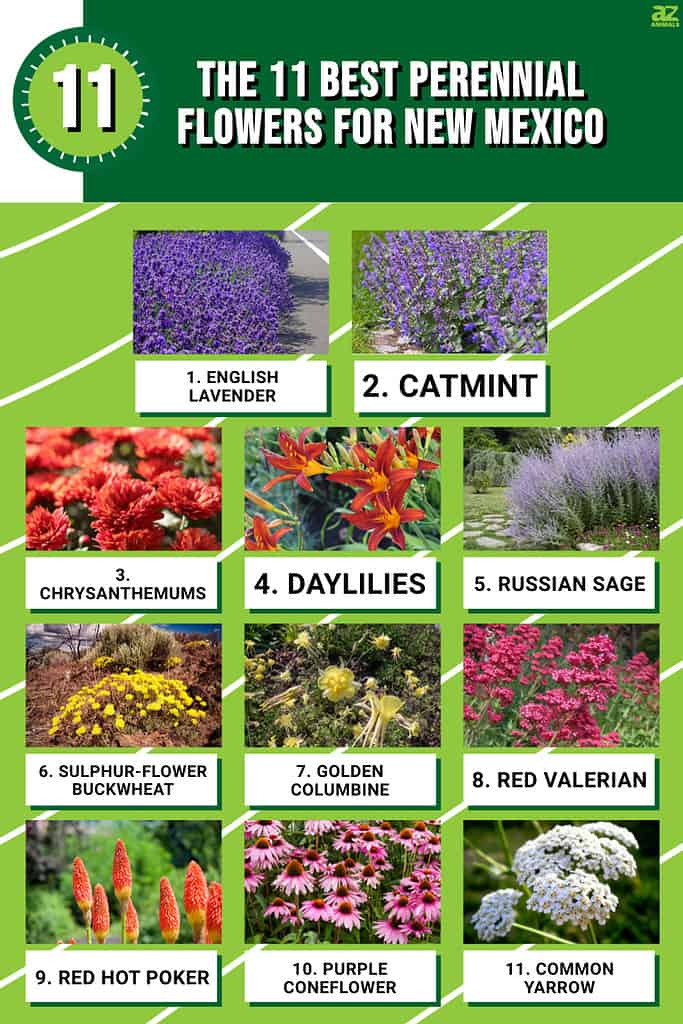
Raising a garden in New Mexico can be challenging. On average, the state receives fewer than 14 inches of rainfall per year. It’s important to choose plants that can withstand the arid climate. One of the best ways to get the most out of your New Mexico garden is with perennial flowers that are low maintenance yet provide visual appeal. Let’s take a look at some perennial flowers in New Mexico and what they need to succeed in gardens in the Land of Enchantment!
1. English Lavender (Lavandula angustifolia)
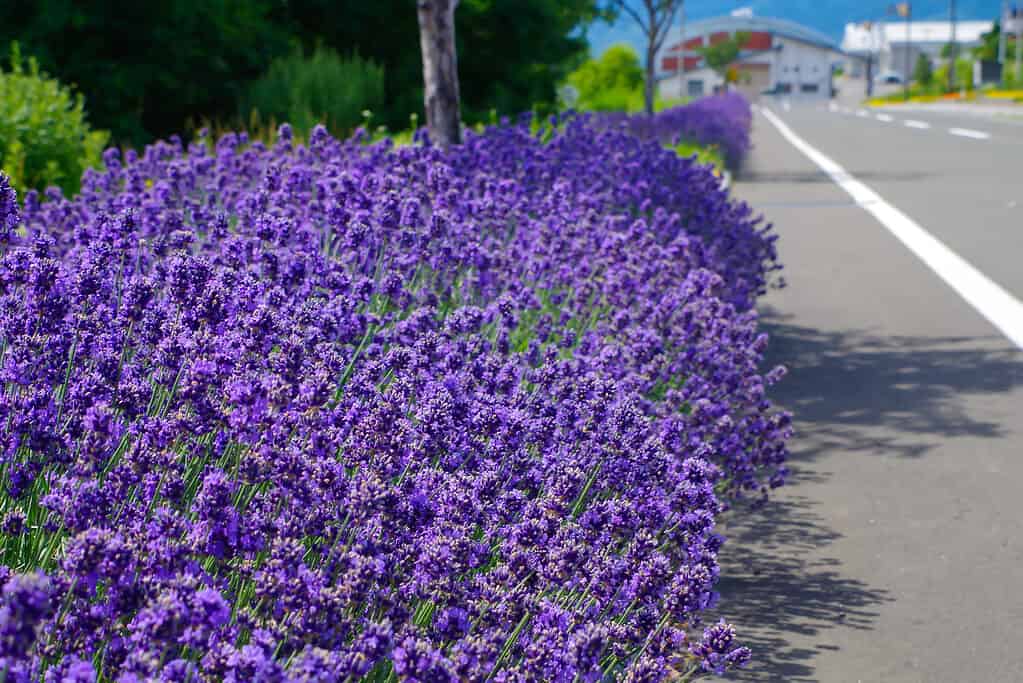
Symbolically, lavender represents calmness, peace, and serenity.
©ajisai13/Shutterstock.com
With its beautiful blue-purple flowers, English lavender provides a brilliant splash of color to New Mexico gardens. Not just another pretty plant, English lavender can be used in cooking, potpourris, or in fragrant soapmaking. Pollinators, like bees and butterflies, are drawn to English lavender. These plants are tough as well, thriving in full sun and well-drained rocky soil. Only reaching heights between two to three feet, English lavender produces blooms in spikes. Its pale green leaves are imbued with a gray-silver shade.
March and April are the best months to plant English lavender, but it can also be planted in the fall. English lavender blooms in June or July for about three to four weeks. A secondary bloom may occur if the plant is pruned after the initial run of flowers fades. In the early springtime, cut the plant back by half to encourage new growth. English lavender is hardy in USDA planting zones 5-10.
2. Catmint (Nepeta cataria)

Catmint is safe for humans and animals to consume in limited amounts.
©Anna Gratys/Shutterstock.com
Commonly used in New Mexico for accent or as a ground cover, catmint is a fragrant herbaceous plant. Cats love the aroma of catmint, which is related to catnip. Catmint is easy to grow and does not require much special care. Catmint can be planted in the fall or in springtime, after the chance of frost has ended. It grows best in well-drained soil in the full sun. Catmint blooms in the late spring and carries through into the fall. The flowers can be blue, pink, or white.
Well-established catmint plants are drought-tolerant and do not require fertilizer. Rabbits and deer stay away from catmint because they do not like the plant’s scent. A beautiful addition to New Mexico outdoor spaces, catmint is hardy in USDA planting zones 3-8.
3. Hardy Chrysanthemums (Chrysanthemum)
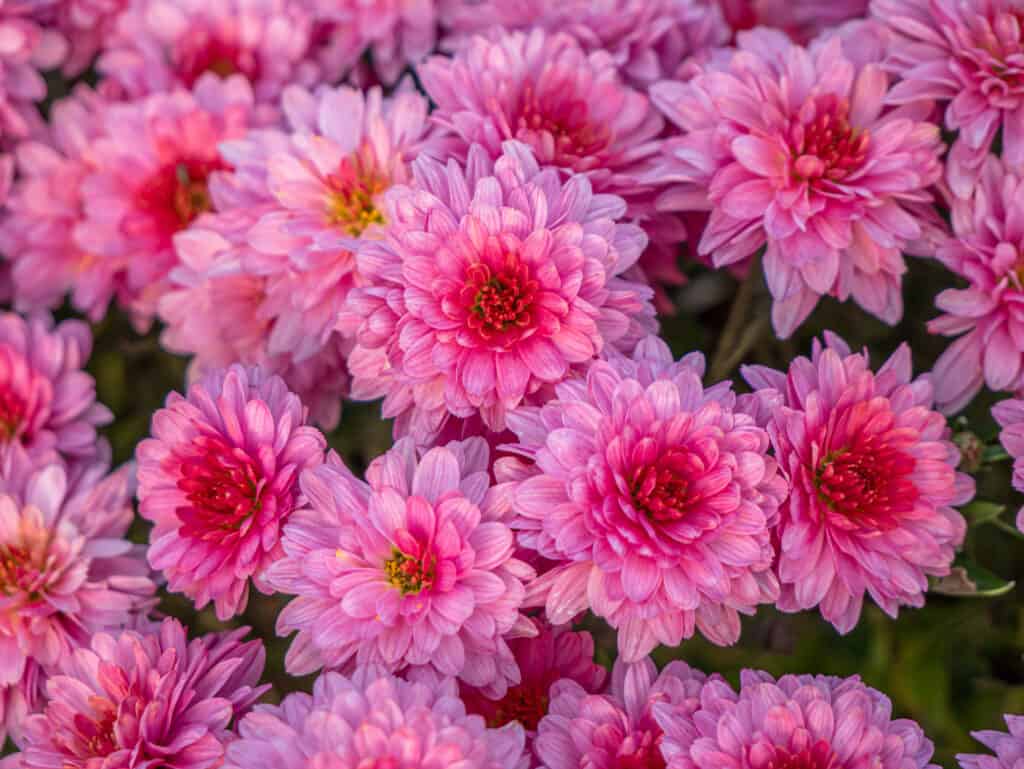
Pyrethrum, an ingredient in natural insect repellent, is derived from some types of chrysanthemum.
©Volodymyr Yakovyna/Shutterstock.com
Normally thought of as a potted plant, there’s no reason for New Mexico residents not to incorporate chrysanthemums into an in-ground garden! Chrysanthemum flowers display in a wide variety of colors, including yellow and orange, making them a favorite plant for fall. Spring is the best time to plant hardy chrysanthemums. That will allow your plants to create a well-established root system.
Plant your chrysanthemums in well-draining soil and full sun. Chrysanthemums flourish in all kinds of soil, but bolstering the quality of the soil with compost is a good idea. In the winter, after all of the blooms have dropped off, prune the plant back hard to encourage new growth in warmer weather. Spreading mulch around your chrysanthemum over the winter will increase its chances of survival. Chrysanthemums are hardy in USDA planting zones 5-9.
4. Daylilies (Hemerocallis)
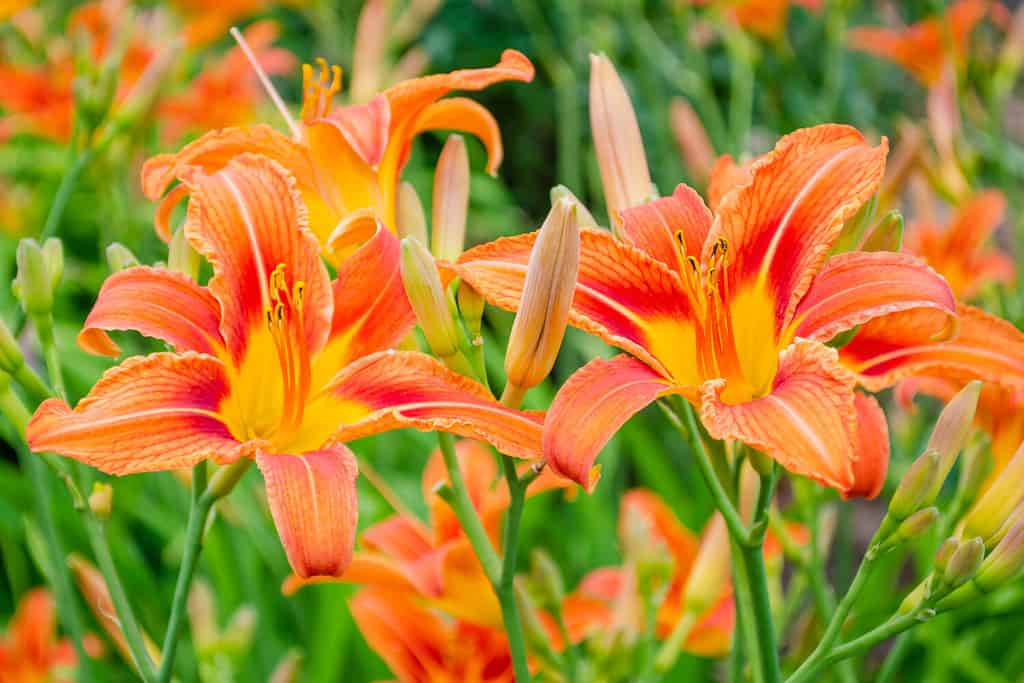
Because of their strong root system, daylilies are sometimes utilized to prevent soil erosion.
©Oksana Akhtanina/Shutterstock.com
Looking for a low-maintenance plant for your New Mexico garden? It’s hard to go wrong with daylilies! There are over 60,000 cultivars to choose from. Flowers of the daylily normally don’t last more than 24 hours. Daylilies have been known to begin blooming in March with flowers appearing into late fall. The blooming time depends on which cultivar you pick. While some daylilies bloom in the morning, others will bloom in the afternoon.
Daylilies love the full sun and are tolerant of the daytime heat. It is best to water them on a regular basis to make sure they don’t wither. Daylilies are propagated by taking cuttings from a parent plant or collecting seedpods from the flowers in the fall. Plant daylilies in the late spring or the early fall. These plants thrive in all kinds of soil, although poor soil can be amended with compost or peat moss. Daylilies are hardy in USDA planting zones 3-9.
5. Russian Sage (Salvia yangii)
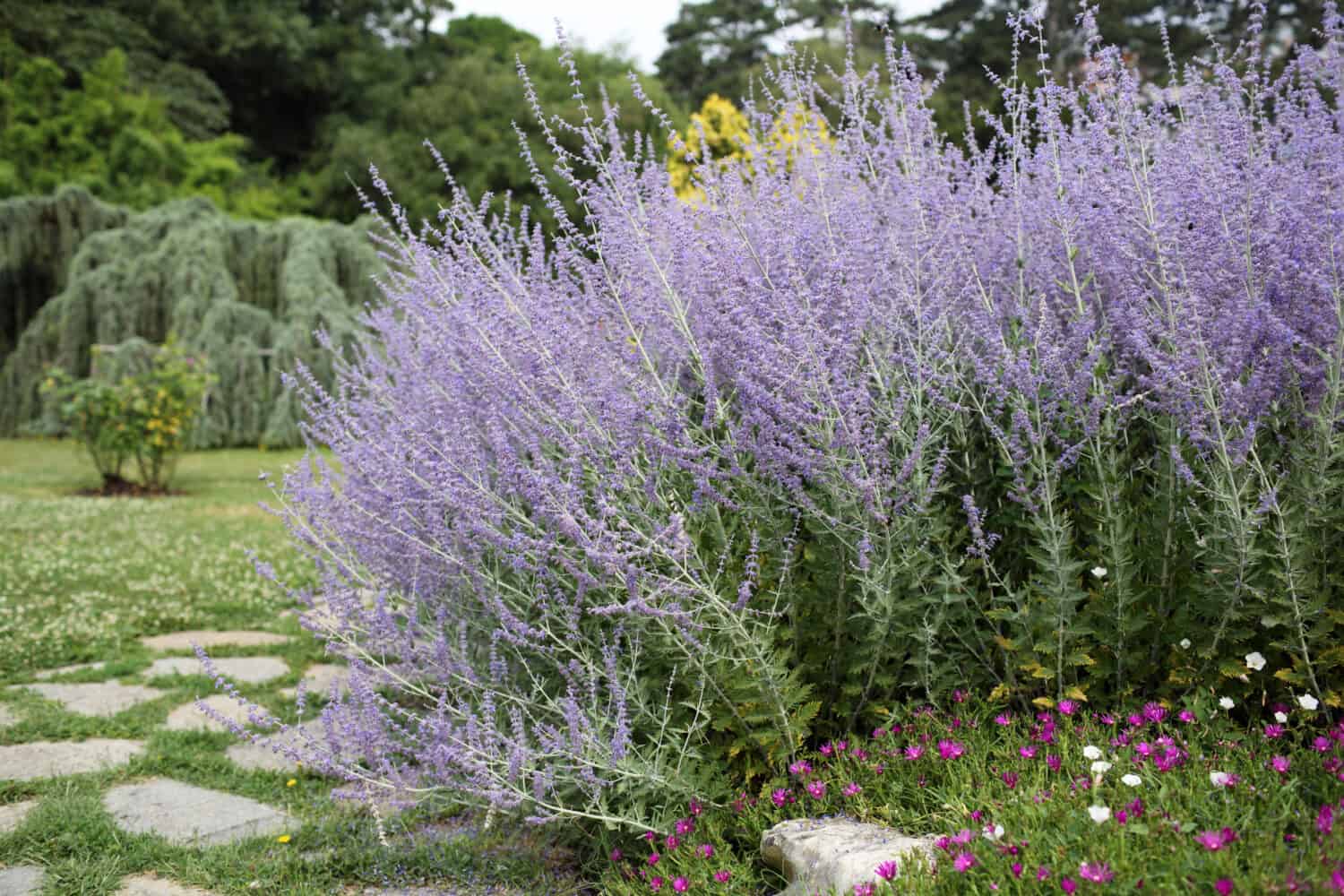
In some Asian countries, Russian sage is used to treat scabies.
©loflo69/Shutterstock.com
Although Russian sage looks like lavender, its leaves give off the distinctively spicy smell of sage. Don’t eat it! Russian sage contains toxic properties. Long square stems produce purplish blooms from June to October. Start Russian sage seeds indoors for six to eight weeks before directly sowing into the soil.
Late spring is a good time to plant Russian sage, but it will become established more quickly if planted in the fall. Choose a spot with well-drained soil where your Russian sage will receive full sun. If you’re planning a cottage garden or an area that appears unkempt, the wild-looking Russian sage will fit right in. Russian sage is hardy in USDA planting zones 4-9.
6. Sulphur-flower Buckwheat (Eriogonum umbellatum)
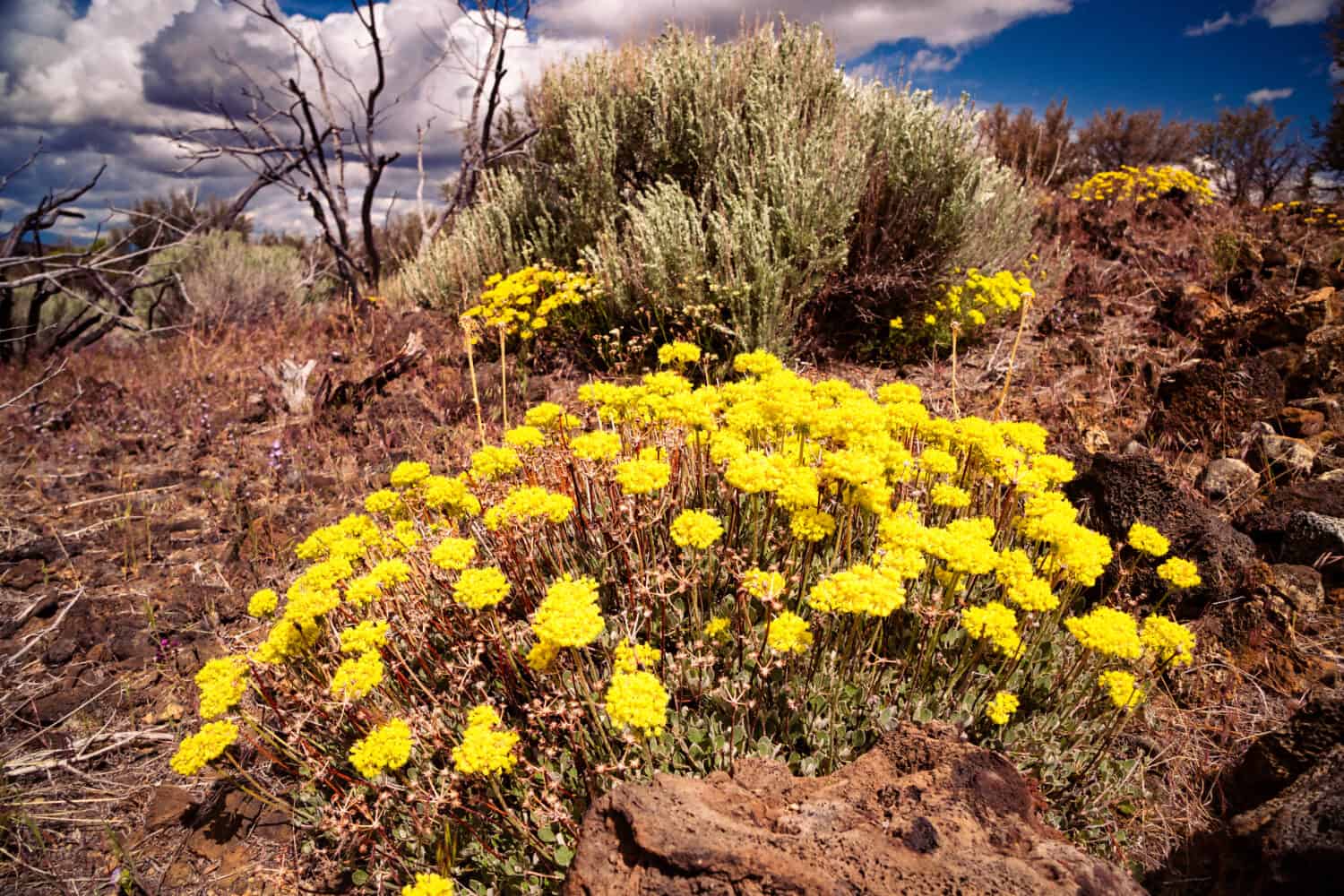
The stems of the sulphur-flower buckwheat have no leaves.
©Geartooth Productions/Shutterstock.com
Native to western North America, the sulphur-flower buckwheat is a beautiful low-maintenance addition to gardens in New Mexico. In May, yellow flowers begin to appear on the plant. As the growing season progresses, the color of the blooms changes from yellow to a reddish-orange. Towards the end of the blooming time, around September or October, the flowers will change from red to brown.
In order to get the most viable plants from sulphur-flower buckwheat seeds, put the seeds through a process called “cold stratification.” Place the seeds into a plastic bag along with a moist medium, like sand or peat moss. Put the bag in the refrigerator for three months before planting in the springtime. If sulphur-flower buckwheat seeds are sown in the fall, then the winter weather may be cold enough to stratify the seeds. Plant the seeds in a place with well-draining soil that receives full sun.
Sulphur-flower buckwheat plants do well in the heat, but keep the seedlings watered until they become well-established in your garden. Drought tolerant, sulphur-flower buckwheat develops long taproots, growing deeply into the earth to absorb nutrients and water. Pollinators love the sulphur-flower buckwheat, bringing birds, bees, and butterflies into your garden. Sulphur-flower buckwheat is hardy in USDA planting zones 4-8.
7. Golden Columbine (Aquilegia chrysantha)
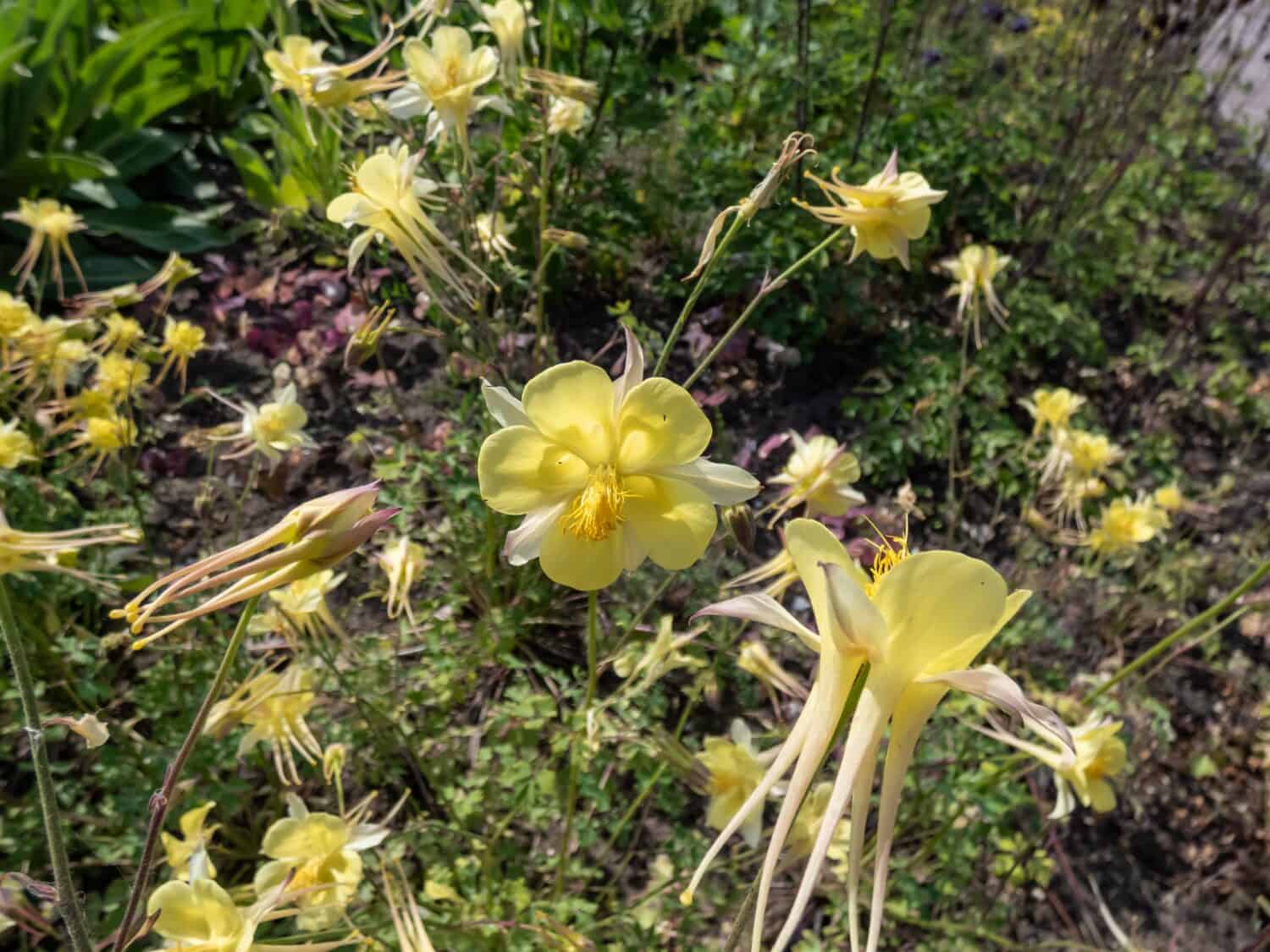
Indigenous peoples made a headache remedy from columbine seeds.
©Kristine Rad/Shutterstock.com
Adaptability is the hallmark of the golden columbine. In the wild, golden columbines grow among the rocks in damp shady canyons. However, the plant has found a place in many New Mexico gardens. Plant seeds for golden columbines either in the fall or after the final spring frost. Displaying yellow flowers with a three-inch diameter, the golden columbine plant grows to a maximum height of three feet. Those blooms begin to appear in late spring and remain until the late summer.
Golden columbines prefer shade, but they can handle a great deal of sunlight, heat, and drought. Full sun will send the plant into distress. Plant golden columbines in an area with good drainage. Too much water sets golden columbines up to develop crown rot. Golden columbines propagate by reseeding. Clipping off the seed heads will keep golden columbines from spreading beyond their garden boundaries. Golden columbines are hardy in USDA planting zones 3-9.
8. Red Valerian (Centranthus ruber)

Jupiter’s Beard is a common name for red valerian.
©Wirestock Creators/Shutterstock.com
With a blooming season lasting from early summer to late fall, red valerian is a perfect choice for New Mexico flower gardens. Red valerian produces gorgeous star-shaped flowers that attract birds and butterflies. It grows in clumps that can reach up to three feet tall and five feet wide. Because the plant does not do well in cold weather, it is best to put red valerian in the ground in late spring or early summer.
Plant red valerian in sandy or loamy soil where it can receive full exposure to the sun. Keep the soil moist, but not overly wet. Red valerian propagates by self-seeding, so deadheading is required to prevent the unwanted spread of the plant. Classified as hardy in USDA zones 4-9, red valerian makes a lush addition to flower arrangements.
9. Red Hot Poker (Kniphofia uvaria)

Red hot pokers are also called torch lilies.
©costagliola/Shutterstock.com
Bright and eye-catching, the red hot poker is a dynamic perennial sure to draw attention to any New Mexico garden. Growing up to five feet tall, the red hot poker looks like its name! Spiky flowers show out in shades of red and orange, giving the flowers a fiery appearance. Red hot pokers are frost tolerant and can be planted from March until September. Blooms start appearing in May and can last until October.
Sandy soil with good drainage is best for red hot pokers, and water the plants on a regular basis. Mature red hot pokers shoot out rhizomes and can spread out up to three feet. Be careful not to let them take over your whole garden bed! Red hot pokers are hardy in USDA planting zones 6-9.
10. Purple Coneflower (Echinacea purpurea)
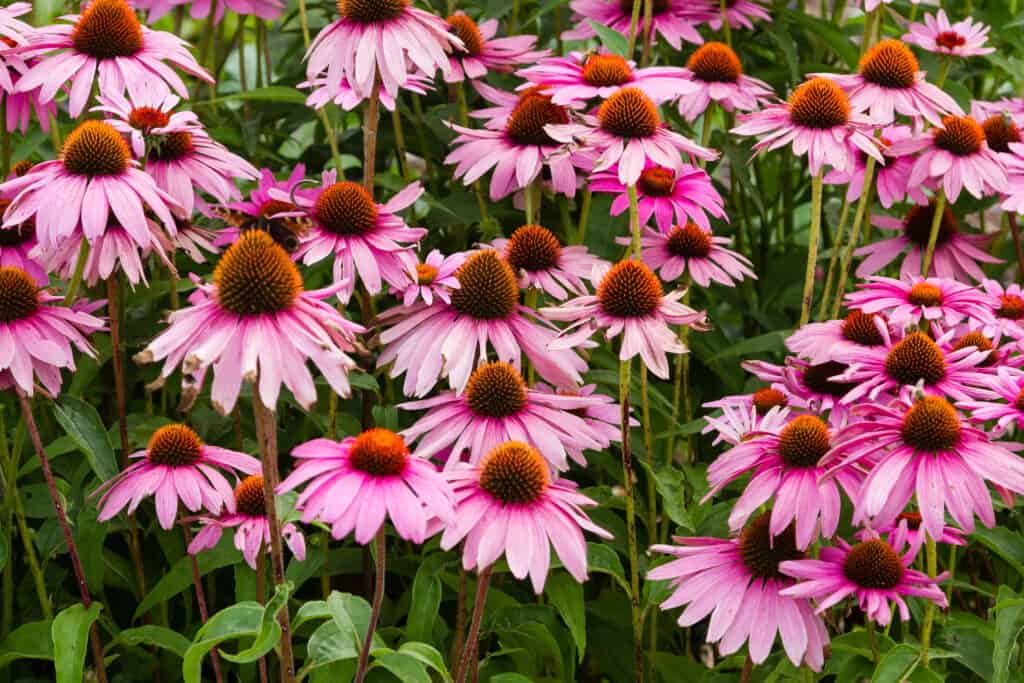
Echinacea flowers are popular ingredients in some herbal teas.
©Milosz Maslanka/Shutterstock.com
Beloved for its alleged medicinal properties, purple coneflower is not native to New Mexico. However, both plants and seeds are obtainable through nurseries or online proprietors. If you choose to plant a potted purple coneflower from a retailer, it can go in the ground in late March or April. Start purple coneflower seeds indoors 10 weeks before the final spring frost. Plant the seeds when the soil is warm enough to turn easily. It may take up to two years for plants to become well-established.
From June until August, mature purple coneflowers exhibit a central brown cone with drooping purple petals. They grow best in well-drained soil with full sun exposure. This plant produces a lot of seeds and can take over garden spaces. Deadheading can reduce the chances of aggressive self-seeding. Purple coneflowers are classified as hardy in USDA planting zones 3-9.
11. Common Yarrow (Achillea millefolium)
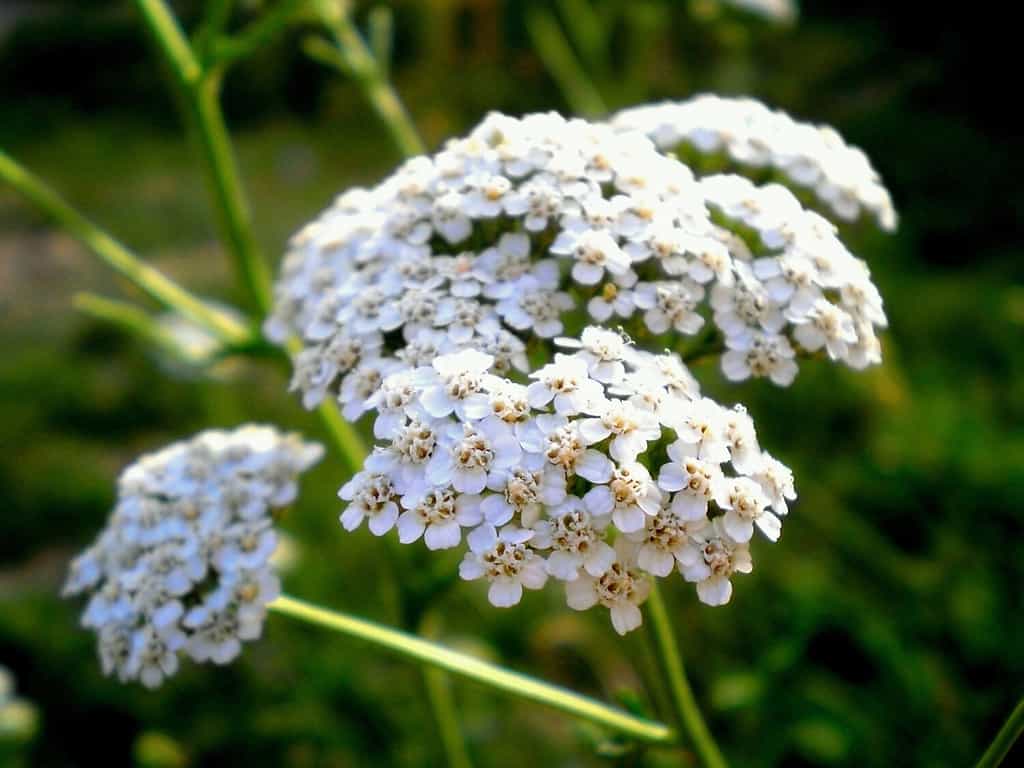
Yarrow is sometimes used as an ingredient for brewing beer.
©SakSa/Shutterstock.com
Sometimes mistaken for Queen Anne’s Lace because of its delicate flowers, common yarrow is native to New Mexico. Its blooms, which range from white to light pink in color, show out in flat clusters. You can plant common yarrow in late spring, early summer, or in the fall. Look for the fragrant yarrow flowers to appear between June and September.
Yarrow does well in dry soil and is tolerant of drought conditions. However, it has the tendency to spread quickly by both rhizomes and self-seeding. Keep animals away from common yarrow as it can be toxic to cats, dogs, and horses. Yarrow is also mildly poisonous to humans and can cause contact dermatitis when handled. This plant is classified is hardy in zones 3-9.
Summary of the 11 Best Perennial Flowers for New Mexico
| Rank | Flower | Growing Conditions | Maintenance |
|---|---|---|---|
| 1 | English Lavender | Thrives in full sun and well-draining, rocky soil | Prune back in springtime to encourage new growth |
| 2 | Catmint | Enjoys full sun and well-draining soil | Low maintenance, but avoid using fertilizer |
| 3 | Hardy Chrysanthemums | Does well in full sun and well-draining soil | Spread mulch around plant in winter, prune in springtime to encourage new growth |
| 4 | Daylilies | Favors full sun and well-draining average soil | Water on a regular basis and amend soil with compost, if necessary |
| 5 | Russian Sage | Prefers full sun and well-draining soil | Low maintenance, but overwatering can cause root rot. Foliage is toxic if consumed. |
| 6 | Sulphur-flower buckwheat | Grows well in full sun and well-draining soil | Seeds benefit from cold stratification |
| 7 | Golden Columbine | Thrives in partial shade and well-draining soil | Deadhead to prevent self-seeding. Overwatering contributes to crown rot. |
| 8 | Red Valerian | Does well in sandy soil and full sun | Does poorly in cold weather. Self-seeding. |
| 9 | Red Hot Poker | Enjoys sandy soil and full sun | Requires regular watering and propagates via rhizomes |
| 10 | Purple Coneflower | Blooms best with full sun exposure in well-draining soil | Aggressive self-seeder, may not bloom for two years after planting |
| 11 | Common Yarrow | Performs best in dry soil and full sun | Toxic to cats, dogs, and horses. Causes contact dermatitis when handled by some people. |
The photo featured at the top of this post is © ajisai13/Shutterstock.com
Thank you for reading! Have some feedback for us? Contact the AZ Animals editorial team.







